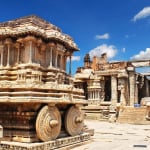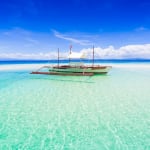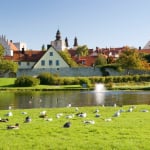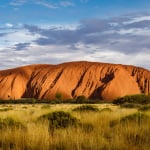Name:Sultan Qaboos Grand Mosque
Address:Sultan Qaboos St, Muscat, Oman
Related Site:http://sultanqaboosgrandmosque.com/

Oman: A Country That Has It All from Deserts, to Mountains to Coastal Scenery
table of contents
[x] close
Oman: A Country That Has It All from Deserts, to Mountains to Coastal Scenery
- 1. Sultan Qaboos Grand Mosque (Muscat)
- 2. Royal Opera House (Muscat)
- 3. Wadi Shab (Muscat)
- 4. Oman Fjords (Khasab)
- 5. Al Mughsail Beach (Salalah)
- 6. Jebel Akhdar (Nizwa)
- 7. Wadi Bani Khalid (Muscat-Sur Road)
- 8. Bait Al Zubair (Muscat)
- 9. Marneef Cave (Salalah)
- 10. Qurum Natural Park (Muscat)
- ◎ Closing
If you would like to experience the desert, mountain ranges and the coast at the same time, we suggest that you go sightseeing in Oman. Oman is an absolute monarchy in the southeastern part of the Arabian Peninsula. This country is also a mixture of a rich cultural and historical trading heritage. Oman is an ocean lovers dream because of its stunning coastline and a tropical climate that averages between 30 and 40ºC throughout the year. The jaw-dropping dramatic caves, stunning mountain ranges and the mind-blowing limestone rock formations in Oman will change your perception of sightseeing in a desert.
1. Sultan Qaboos Grand Mosque (Muscat)

Sultan Qaboos Grand Mosque is one of the highlights of sightseeing in Oman. It is located in the capital city of Oman, Muscat, along the stretch of Sultan Qaboos Highway. This grand mosque is embellished in spectacular mosaic patterns, has the second largest single piece carpet and the largest chandelier in the world. The mosque can hold more than twenty thousand worshippers at a go, making it the largest mosque in Oman. Sultan Qaboos Grand Mosque is the only mosque in Oman that is open for sightseeing to non-muslim visitors. The mosque is usually open from 8 am to 11 am every day, except on Fridays.
Visitors are expected to dress modestly covering arms and legs. Women above seven years are expected to cover their hair while men should wear long trousers and cover their shoulders. Other than enjoying the magnificent Islamic architecture of the mosque, you can also marvel at its collection of more than twenty thousand pieces of literature in its library. Oman can be scorching hot but the months between November and March are cool with temperatures averaging below 30ºC, making it the best weather for sightseeing.
2. Royal Opera House (Muscat)

Photo by commons.wikimedia.org
Music, arts and culture in Oman culminate at its largest opera house, the Royal Opera House. The Royal Opera House sits in Shati Al-Qurm district of the capital of Oman. This iconic architecture of Oman can accommodate more than one thousand people at once. The opera house hosted some of the biggest cultural events, the most notable being the Royal Oman Symphony Orchestra. Royal Opera House is not only open for concerts but also for regular visits though sightseeing hours are restricted to time between 8:30 am and 10:30 am every day. The peak season for the opera house is from September to June when most actual operas take place.
Name:Royal Opera House
Address:Royal Opera House, Al Kharjiyah St, Muscat 103, Oman
Related Site:https://www.rohmuscat.org.om/en
3. Wadi Shab (Muscat)
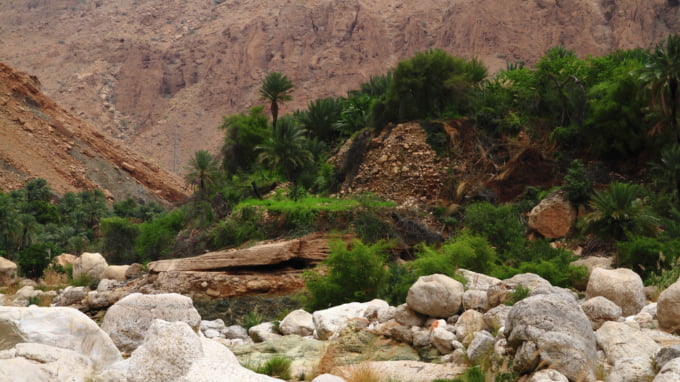
Photo by Rudolf Tepfenhart/shutterstock
Wadi is a traditional Oman word that means a valley. Wadi Shab is the best-known Wadi in Oman and is one of the most popular outdoor sightseeing attractions of Oman. It is about twenty kilometers away from Muscat, a distance worth two hours of driving. The main attraction to this Wadi is a waterfall which will take you about 40 minutes of hiking. The best weather for trekking the rocky cliffs is in winter from October to March. Summer season from April to September is a cheaper sightseeing option, but temperatures can soar above 48ºC. We recommend that you start your sightseeing tour early in the morning to avoid the scorching sun at midday. We also advise that you take with you plenty of drinking water and sunscreen.
Name:Wadi Shab
Address:Muscat 130, Oman
4. Oman Fjords (Khasab)
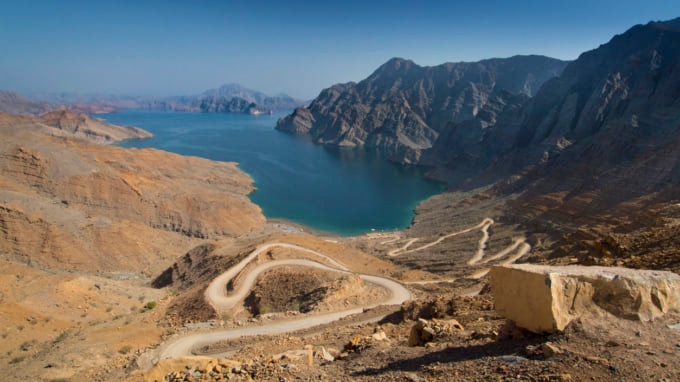
Oman Fjords offers an unmatched scenic view of rock formations branching out of the ocean to form the Oman tip of the Strait of Hormuz. The Fjords are in Khasab, an exclave city of Oman bordering the United Arab Emirates. You can best enjoy a sightseeing tour of the fjords either by a public Oman traditional boat or hire a personalized boat. You may also make your sightseeing experience more interesting by snorkeling and diving to enjoy the marine life of Oman. A trip to the Fjords is most enjoyable during winter or summer in the morning just in time for ocean wildlife or in the evening for a breathtaking view of the sunset.
Name:Oman Fjords
Address:Khasab 811, Oman
5. Al Mughsail Beach (Salalah)
Oman boasts of more than one thousand kilometers of coastline of the Arabian Sea. The beaches offer a diverse geographical creation ideal for marine excursions and summer holidays. The Al Mughsail Beach is probably one of the most popular beaches of Oman. It is liked for its soft white sand, clear blue water and mountainous landscape. The beach is suitable for a family picnic in any of the Oman traditional huts on the beach. Sightseeing at the beach is also a perfect chance to see the varieties of birds in Oman that line along the beach. The beach is also preferred by couples for an evening romantic walk. The weather in summer the most favorable to enjoy the beach.
Name:Al Mughsail Beach
Address:Mughsayl, Salalah, Oman
6. Jebel Akhdar (Nizwa)

Jebel Akhdar, an Arabian word meaning 'the green mountain,' is the central part of the Al Hajar Mountains, the highest mountain ranges of Oman. Jebel Akhdar is mostly limestone and desert in nature, but at higher altitudes, it is moist enough to sustain some form of life. It takes about one hour to hike to the best sightseeing point for viewing the villages below, farms and the rest of the mountain ranges. Most of the parts of Jebel Akhdar are dry in summer, hence if you want to experience the lush green farms and villages, then it is best to visit as from February. The hike is not so tiring but it would be wise to get comfortable footwear because of the rocky paths.
Name:Jebel Akhdar
Address:Al Hajar Mountains Range, Nizwa, Oman
7. Wadi Bani Khalid (Muscat-Sur Road)

Wadi Bani Khalid is a favorite for adventurous sightseeing seekers in Oman. This Wadi is a desert paradise in its own right and is in the north of Al Kamil, an old port town of Oman. Wadi Bani Khalid has some of the most unique rock formations, green natural water pools and waterfalls. At the Wadi, there is also a cave to explore, but you have to exercise caution as the rocks are slippery and dark. You will most probably be safe with a guide who is familiar with the paths. Temperatures at times become unbearable especially in summer as from midday, though there are shades and picnic areas along the valley. Morning hours in winter are the best for sightseeing. Wadi Bani Khalid valley joins Al Hajar Mountains and is a frequent route for trekkers going to these mountain ranges. You can, therefore, combine sightseeing the Wadi Bani Khalid with Al Hajar.
Name:Wadi Bani Khalid
Address:Road 23, Muscat-Sur Road, Oman
8. Bait Al Zubair (Muscat)
Bait Al Zubair is a privately owned museum with a private collection of ancient weapons, attire, jewelry, coins, paintings, photographs and household equipment. Outside the museum is a well-manicured garden with an exhibit of a traditional village in Oman before the 1970s. The museum also has a gift shop with a wide range of carefully designed souvenirs that represent the heritage of Oman. Bait Al Zubair is open from Monday to Saturday, though special times apply during the Holy month of Ramadan. The museum is in the Muscat capital, near the Al- Alam Palace.
Name:Bait Al Zubair
Address:Muscat 100, Oman
Related Site:http://www.baitalzubair.com/?lang=en
9. Marneef Cave (Salalah)
Marneef Cave is about two kilometers from Al Mughsayl Bay Beach and is an alluring place for sightseeing the beach and magnificent blowholes that shoot up to three meters in the air. The cave is easy to explore as it has easy pedestrians paths that lead to the cave formations. The best time to view blowholes is during the monsoon period in Salalah. Salalah is one of the few areas in Oman that experience the monsoon season in autumn, from late June to early September. In addition to the walkways, there are seats for visitors to sit and marvel at the outstanding beauty of the ocean.
Name:Marneef Cave
Address:Salalah, Oman
10. Qurum Natural Park (Muscat)
The place to watch the natural life of Oman is at the Qurum Natural Park. It is the largest park in the city center of Oman which was constructed in the 1990s. The park has a waterfall hill, a mangrove swamp and a large man-made boating lake. The park is also a habitat for various bird species including the famous Great White Egret and the Squacco Heron. The well-maintained floral gardens of the park have more than twenty varieties of roses. Tourists enjoy the beauty of the park at night when the man created waterfall hill is illuminated with a background of colorful lights. The park also houses the city amphitheater which has a capacity of about 4500 people. Qurum Natural Park is a must-visit sightseeing attraction in winter when the days are cool, especially for an evening stroll.
Name:Qurum Natural Park
Address:Quartier de Qurum, Muscat 113, Oman
◎ Closing
The sightseeing options in Oman are undiscovered gems in the Arabian region. The charm of secluded beaches with soft sand and warm waters, golden deserts and green valleys are the top reasons that make Oman a priceless sightseeing holiday destination, especially in winter and summer. The people of Oman will also make your stay an unforgettable one, as they are friendly and warm to visitors. Actually, while sightseeing some of the places like the Sultan Qaboos Grand Mosque and while on a traditional boat to Oman Fjords, you will find Oman women who will serve you coffee and dates at no cost, as they tell you of the culture and history of this pearl of the Arabian Peninsula.
RELATED ARTICLES
REGIONS
CATEGORIES
FEATURED ON Oman
-
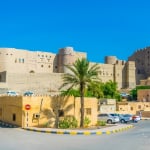
A beautiful country on the Arabian Peninsula! Here are four UNESCO World Heritage Sites in Oman
-
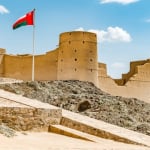
Oman’s Largest Fortress! Must-See Spots at the World Heritage Site, Bahla Fort
-
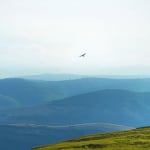
Exploring the Ancient City of Salalah, Oman: 8 Must-Visit Tourist Spots!
-
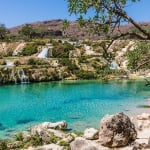
6 recommended tourist spots in Oman! A desert country where you can enjoy nature to the fullest
-

6 Places That Show You Should Visit Oman in 2022
MOST POPULAR ON Oman
-
 1
1Doha: Must-see Attractions in the Capital of Qatar
-
 2
2Toronto: 10 Things to do in this Picturesque Canadian City
-
 3
3Amarillo: A City Famous for It’s Amazing Canyons, Great History and Music
-
 4
4South Korea: Dazzling Scenery, Rich Culture and Fascinating History
-
 5
5Kuwait: A Country in Middle East Asia Famous for Hot Sand Dunes and Stunning Cityscape

